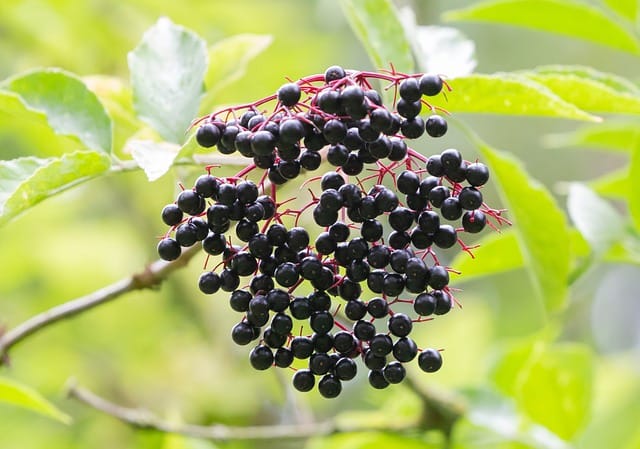
What Are The 5 Best Herbs For Building An Immune System
Discover the top 5 herbs to boost your immune system! Explore natural remedies that enhance your health and keep you feeling your best.
Lion’s Mane mushrooms look unusual; they are edible and are considered to have neurological benefits. This guide helps all growers, even beginners how to grow Lion’s Mane mushrooms at home!

Lion’s Mane (Hericium erinaceus) is a unique-looking fungus. Its structure resembles the shaggy mane of icicles, and its taste is similar to that of seafood. It is also famous for its ability to boost brain functions and the immune system. Growing them at home can save money on fresh, organic mushrooms, a popular ingredient.
Lion’s mane mushroom is the new ‘roaring’ food with many health benefits. Due to its unusual appearance and excellent taste, it is also characterized by powerful medicinal qualities.
1. Prepare the substrate.
Lion’s Mane mushrooms are successful with media based on hardwood, hardwood sawdust, or hardwood chips. You can purchase the substrate in blocks or produce it in your home using hardwood sawdust with a nitrogen supplement, which may be wheat bran. This is because the substrate deposited by the microorganisms must be pasteurized or sterilized to suppress the competing organisms.
2. Inoculate the substrate.
Once the substrate cools after sterilization, it’s time to inoculate it with spawn. Break up the Lion’s Mane grain spawn and evenly mix it into the substrate at a 10% ratio (e.g., 1 pound of spawn for 10 pounds of substrate). Place the mixture into plastic grow bags, ensuring air can circulate inside.
3. Incubation
Keep the inoculated bags in a warm, dark location for 2 to 4 weeks. The ideal temperature for incubation is between 20-25°C, or 68-77°F. At this time, the mycelium will penetrate the substrate, changing its colour to white. Additionally, be mindful of potential contaminations such as green mould and strive to keep the space clean.
4. Initiating Fruiting
Once the mycelium has grown over the surface of the substrate, it is time to shift the bags to fruiting conditions. Puncture the grow bags where mushroom primordia will appear soon, commonly known as baby mushrooms. Move the bags to a well-lit, evaporatively cooled area that maintains a temperature of 55-65°F and a high relative humidity of 80% or more. Maintain these conditions by spraying the bags or using a tent hose to reach the humidifier’s beneficiary.
5. Maintaining Fruiting Conditions
Small white precipitations, resembling ice needles, should appear in the next 5-10 days. These will mature to full-size Lion’s Mane mushrooms in the next one or two weeks.
6. Harvesting
Harvest the mushrooms early in the morning when the caps are firm, and the spines (teeth) are approximately an inch long. Cut the mushroom as closely as possible to the substrate using a fresh blade on a cutting board. Otherwise, pinch them off gently to not harm the mycelium; it may yield another round of mushrooms.
For an outdoor approach, the other method of growing Lion’s Mane mushroom is hardwood logs (oak, beech, or maple). Poke holes in the logs with ¼-inch-girth dowels and insert spawn plugs; then seal the holes with wax and stack the logs in a shaded, humid area to incubate for 6–12 months before primordia formation.
Due to low humidity, joint problems may arise from contamination with green mold or a dried substrate. Replace the contaminated substrate immediately and permanently ventilate the area to prevent mold formation.
Cultivating Lion’s Mane mushrooms yields a delicious and tasty recipe and has potential health benefits. If placed in the right environment and adequately cared for, you can enjoy fresh mushrooms in your home all year round.

Discover the top 5 herbs to boost your immune system! Explore natural remedies that enhance your health and keep you feeling your best.

Discover the health benefits of turmeric for dogs. Learn how this powerful spice can enhance your pet’s well-being and support their overall health.

Dr. Adil is a dedicated health professional with a passion for preventive medicine and holistic wellness. Dr. Adil Pirzada focuses on promoting long-term health through a balanced lifestyle, emphasizing both mental and physical well-being. He is currently working as Resident Pediatrician at Ayub Teaching hospital Abbottabad, Pakistan.
View all posts
Dr Alaf Khan (BDS, FCPS) is a consultant oral and Maxillofacial Surgeon. He is also a seasoned nutritionist who understands the science behind food and its impact on health. Dr. Alaf Khan is passionate about educating others on proper nutrition and dietary habits that promote sustained wellness and vitality. He is currently working as a Dental Surgeon at Bacha Khan Dental College, Mardan Medical Complex, Mardan, Pakistan.
View all posts